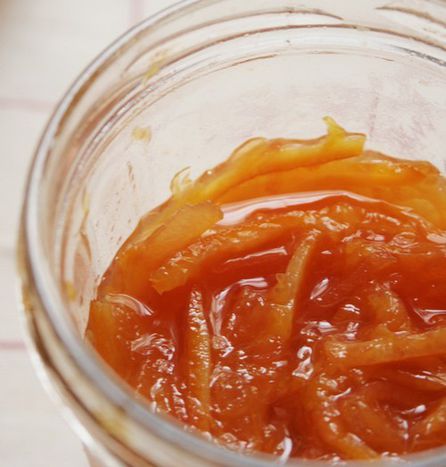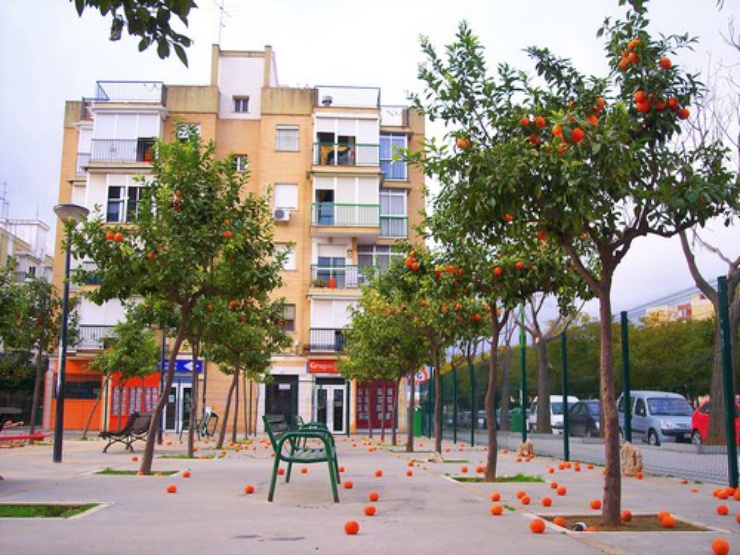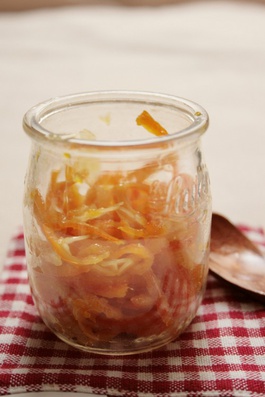
EU law: marmelade vs. jam
Published on
Translation by:
Lindsey EvansIt's frightfully British and citrus-fruity, so don't confuse this ‘jam’ with its cousins on the continent. Spoons at the ready!
 Right up to 15 February, the competitors were fighting hard for the title in that green and pleasant county of Cumbria, in the north west of England. There, the best marmalade producer was crowned at the World’s Original Marmalade Festival. The festival’s participants were also able to share their secrets for making this bittersweet orange preserve. And now’s the time, too, since at the end of winter those tart Seville oranges are just coming off the trees in southern Spain.
Right up to 15 February, the competitors were fighting hard for the title in that green and pleasant county of Cumbria, in the north west of England. There, the best marmalade producer was crowned at the World’s Original Marmalade Festival. The festival’s participants were also able to share their secrets for making this bittersweet orange preserve. And now’s the time, too, since at the end of winter those tart Seville oranges are just coming off the trees in southern Spain.
Under European law, the word 'marmalade' can only be applied to fruit preserves made from citrus fruits
Let’s go back to the sunny origins of this excellent English delicacy. In days gone by, the marmelo, which means ‘quince’ in Portuguese, would be made into a jelly. One fine day in the sixteenth century, a few jars of this sugary spread were exported to Scotland. Or, more precisely, Dundee, where grocer’s wife Janet Keiller, was so taken with it that she decided to go into production herself to use up a crate of past-their-best oranges. That was enough to get Britons seizing on the recipe and ushering marmalade into the national hall of fame. But – be careful – don’t confuse marmalade with ‘jam’. As the BBC Food website specifies: 'Under European law, the word 'marmalade' can only be applied to fruit preserves made from citrus fruits. A product made with any other kind of fruit must be called 'jam'.

'Culture is like jam: the less we have, the thicker we spread it,' they say in France ('La culture, c’est comme la confiture, moins on en a, plus on l’étale'). Fortunately, we’re not exactly short of the sweet stuff in Europe, since there is a healthy jam tradition and even more recipes! Apart from the ‘bread-butter-jam’ breakfast, the French enjoy fig jam (confiture de figue) as an accompaniment to their delicious foie gras. In Spain, again it’s quince paste that we’re having with a slice of manchego(hard ewe milk cheese) and a few grapes. A combination that deserves its own maxim: Uvas y queso saben a beso ('cheese and grapes taste like a kiss'), as the Spanish say, with their mouths full. In Germany we mix fruit and spices in Pflaumenmus, a ‘puree’ of plums seasoned with cloves and a touch of vinegar. It’s best served with black bread. Sweet, savoury, or a mixture of the two? For our recipe, we’ve gone for bitter.
Recipe: Marmalade
 3 organic oranges
1 organic lemon
1.2 kilos sugar
1.2 litres water
3 organic oranges
1 organic lemon
1.2 kilos sugar
1.2 litres water
Wash and dry the fruit, then chop finely, removing the seeds
In a large bowl, mix the fruit with the water and sugar, and leave to ‘marinate’ overnight
The next day, pour into a large saucepan (ideally a jam-making pan), bring to the boil, and then simmer over a medium heat for 2 hours
Transfer to jars and keep refrigerated after opening.
Translated from Lady Marmelade



